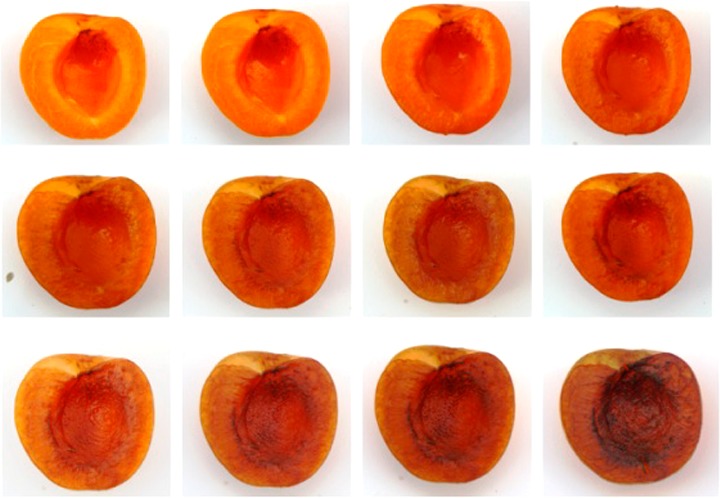- Record: found
- Abstract: found
- Article: not found
Purification and Characterization of Latent Polyphenol Oxidase from Apricot ( Prunus armeniaca L.)

Read this article at
Abstract

Polyphenol oxidase from apricot ( Prunus armeniaca) ( PaPPO) was purified in its latent form (L- PaPPO), and the molecular weight was determined to be 63 kDa by SDS-PAGE. L- PaPPO was activated in the presence of substrate at low pH. The activity was enhanced by CuSO 4 and low concentrations (≤ 2 mM) of SDS. PaPPO has its pH and temperature optimum at pH 4.5 and 45 °C for catechol as substrate. It showed diphenolase activity and highest affinity toward 4-methylcatechol ( K M = 2.0 mM) and chlorogenic acid ( K M = 2.7 mM). L- PaPPO was found to be spontaneously activated during storage at 4 °C, creating a new band at 38 kDa representing the activated form (A- PaPPO). The mass of A- PaPPO was determined by mass spectrometry as 37 455.6 Da (Asp102 → Leu429). Both L- PaPPO and A- PaPPO were identified as polyphenol oxidase corresponding to the known PaPPO sequence (UniProt O81103) by means of peptide mass fingerprinting.
Related collections
Most cited references57
- Record: found
- Abstract: found
- Article: not found
Polyphenol oxidases in plants and fungi: going places? A review.
- Record: found
- Abstract: not found
- Article: not found
